#bowler
Text
The Importance of Names in the Railway Series
It's been a hot minute since my last take on the world of Thomas & Friends - so here's one that has sort of been wandering about in the back of my mind for a while.
How important is a name to an engine? Cause we know the engines do put a lot of value into a name. Stepney and Edward say as such:
"[...] I think our Controller was right. All engines ought to have names."
"Yes," agreed Edward, "it's most important."

And it's further reinforced by Bear later in the series:
"It's nicer than just having a number," he (Bear) says. "Having a name means that you really belong."

Donald and Douglas echo this by giving themselves names (partially to fool the Fat Controller) and the interesting thing is that Sir Charles actually uses their names almost exclusively from that moment on - unless referring to them by their new numbers.
Even BoCo gives himself a name! And it feels pretty on-the-spot too, seeing as he just goes "but you can call me BoCo".
But in contrast, every single rail-based 'villain' or 'antagonist' in the Railway Series only has a number, or is Diesel, who doesn't really have a name either. Check me! There's:
Diesel
The 'Big City Engine'
Class 40 (D261/D471)
D199
D40125





None of them have names - not even 'the Big City Engine'. They're given nicknames by the engines, but otherwise they are just numbers. And I think it runs a bit deeper than that. A little while back I did a post on the 'railway rulebook' - and something I said was that managers did everything in their power to both dehumanise the engines and make the engines loyal to them. What better way of doing that than only giving certain engines names? 'Flying Scotsman' gets a name because he's a prestigious express engine, but the engine who shunts his coaches? The goods engine who brought his coal? Why would management give them names - to do that is to undermine the class system they've built to keep the engines fighting amongst themselves. If the engines are on equal footing, then they'd want equal rights.
You know... this sounds a lot like the Communist Manifesto. I don't think the Rev. W. Awdry intended it that way, but it does.
But that's beside my point. Certain railways either don't want their engines to have names. In particular, I would point at the LMS and the LNER, which both had a massive roster of engines. Not only is recording all their names a pain, but it would also add a sense of individuality to them and muck up their spreadsheets. In most countries, people have an ID number for identification - and that's what these companies needed. Not names; numbers.

The GWR is a notable exception to this, and I think people have noticed that. Both Duck and Oliver arrive with names, and Sir Topham I was a Swindon-apprentice who would have grown up with GWR ideology. Edward got his name because he was built as an express engine, Henry and Gordon for the same reasons - and everyone else either gives themselves names or have names given to them.

Toby probably got his from his crew and the locals after decades of being in the same area - I mean, he literally runs into their town, of course they have a name for him. Percy is given his by Sir Topham, and we can infer Thomas and James got similar treatment. Donald and Douglas gave themselves names, and so did BoCo.
Another possibility is that a preservation society would give engines names, though that was more the engines on said heritage line - like in Stepney the Bluebell Engine, where Stepney refers to all his friends on the Bluebell by name, and says his controller gave out some names, like Bluebell and Primrose - but Adams and Cromford got their names from the other engines and they don't want the controller finding out. And again, Stepney and Edward both explicitly say that they believe engines ought to have names - and that they believe it really makes an engine feel like family.
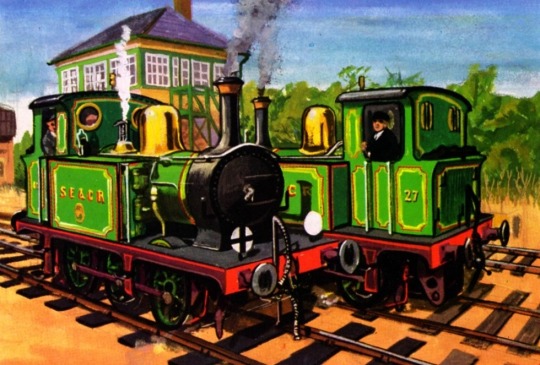
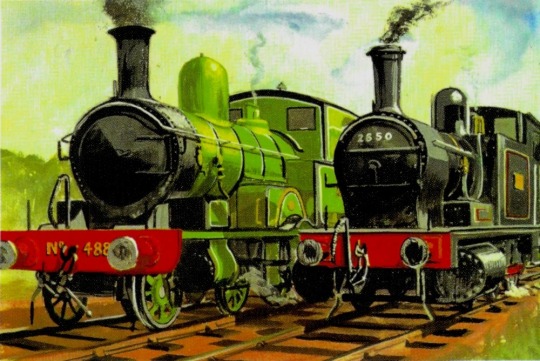
This almost exclusively applies to engines in a steam-dominated society, and once again I have to return to my old nemesis: early British Railways. British Railways inherited a massive network that spanned a continent and had thousands of engines - not to mention the fact they were going to scrap all their steam engines and replace them with new diesel engines. Names were never ever going to be viable. But moreover, they were going to kill all the steam engines - if these engines were seen by the public to be very sentient and intelligent, then there would be an outcry. Dehumanising these engines was extremely important to their business model.
So almost every new engine built under BR got no name. And that includes steam and diesel engines. And this sort of environment, where engines referred to each other by number, became standard.
Names have a lot of meaning behind them. We give names to things we believe are very valuable to us, things we really bond with, like a teddy bear or a beloved family car. Names confer a level of love and care, as opposed to numbers, which have a level of 'repetitive factory conveyor belt' to them, for lack of a better term. These engines, referring to each other by number, didn't sound as human as those referring to each other by name.
For a good example, as mentioned above, the GWR gave all its engines names - and the GWR has the most engines from its company preserved. The fact that people knew these engines had names, and possibly by name, really contributed to how many were saved.

But what makes it even more interesting is the fact that often engines give each other names. Bear is given his name by the other engines, Duck is a nickname given to 'Montague' because he waddles. And I think the reason that none of these diesels have names is because no steam engine ever gave them a name, and company policy means no diesel has the mindset for giving out names either. Steam engines give each other names, but it becomes exclusive to them and friendly diesels, and thus dies out over the generations.
Engines today don't have names. They don't even really have a proper visible number. They have a serial number somewhere, but that's about it. And I think that says a lot about what happened to the tradition of names for engines.
To sum up a very long, winding ramble, I think names came from several places:
Themselves. Engines could name themselves, like Donald and Douglas - who got their names from (maybe) former drivers?
From crew and community. Toby most likely got his name from the people around him, being on an isolated tramway.
From their owners. Flying Scotsman, Mallard and Percy are good examples of this. It represents a level of importance and care for this engine, as well as in some cases reinforcing class.
From other engines. Duck and Bear are great examples of this, as they are given names by their friends that they like, as it makes them feel as if they fit in.

And these names were very common in the steam era as engines gave each other names and communities knew specific engines and gave them names. As everything became more commercial and bureaucratic, naming was lost. Numbers reinforced company identity and dehumanised the engines to make them less sympathetic to the public. Look at Donald and Douglas, who probably had their names for decades - given by their friends - but never learnt by management.
Wow, that took a bit of a dark turn. Thanks for reading, and as usual, none of the above pictures are mine.
#fanfiction writer#railway series#thomas the tank engine#weirdowithaquill#railways#the railway series#ttte stepney#ttte bear#ttte donald#ttte douglas#ttte diesel#ttte d199#bowler#ttte duck#The Great Western Railway#gwr#The Bluebell Railway#names#names for trains#why do only some engines have names?#ao3 stuff#rws headcanon#ttte analysis#very long post#long reads#british rail
157 notes
·
View notes
Text
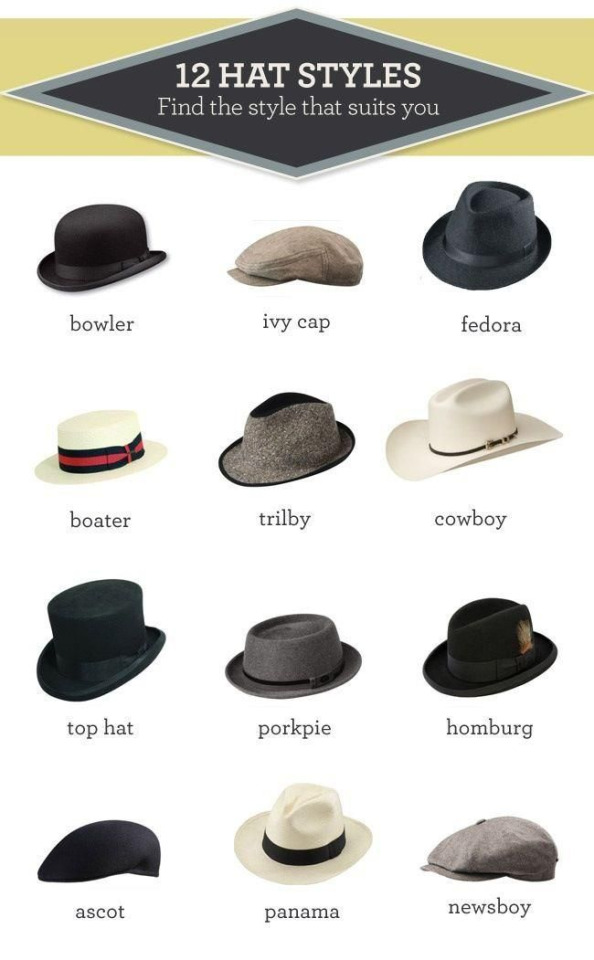
#gentlemen#gentleman#hats#hat#bowler#ivy cap#fedora#boater#trilby#cowboy#top hat#porkpie#homburg#ascot#panama#newsboy
33 notes
·
View notes
Text

St. Patrick’s Day Is Loading
27 notes
·
View notes
Text
Like this post if you like to go bowling
#bowling#bowler#bowling alley#bowling team#bowling p#bowling ball#bowling lanes#hobbies#activities#date ideas#likes
40 notes
·
View notes
Text

Witch's cauldron🌙
#creative inspiration#art#handmade#artists on tumblr#ceramics#clay#ceramist#dish#inspiration#witch#moon#stars#pottery#pot#flowers#magic#bowler#aesthetics#witch aesthetic#witch vibes#esoterics#эстетика#эстетикаведьмы#котелок#котел#ведьма#магия#керамика#глина#ручнаяработа
45 notes
·
View notes
Photo



The French Caper
A 2 piece set for Spy that gives him a nefarious look, with a new balaclava and bowler hat with 2 styles. The set includes:
Backalley Bowler (Hot Pursuit Style)
Backalley Bowler (Clean Getaway Style)
Masked Menace
If you like any of these items, please consider voting for them here!
#TF2#Team Fortress 2#Spy#Bowler#Hat#Mask#Balaclava#Thief#Burlgar#Mugger#Bank Robber#Robber#Cosmetics#TF2 Workshop#Steam Workshop
57 notes
·
View notes
Photo




Bowler Extreme Defender, 2022. The Land Rover tuning specialists have revealed an upgrade that will be available for 90, 110 or 130 “classic” Defender platforms. The conversion includes��a combination of 35-inch BFGoodrich tyres with bead-lock performance alloys and bespoke front and rear suspension providing a 2 inch lift all round. There's a new extended wheel arch kit while the front bumper is replaced with a lightweight Bowler version. The look is completed with an external rollcage and rockslider steps and classic Bowler sill protectors. The additional Lazer lights spotlight package can be added at the customer’s request. Output is increased to 175hp thanks to a Bowler modified ECU and racing intercooler
#Bowler#Bowler Extreme Defender#Land Rover Defender#4x4#SUV#high riding#modified truck#custom truck#conversion
252 notes
·
View notes
Text

A little collage of a cutie I would love to bowl with...I know my Mom would love that too!
#beautiful#ae jeans#great butt#perfect butt#bowler#pretty#cute#hot as fuck#so hot 🔥🔥🔥#hot as hell#gorgeous#hot as fuuuuck#hot and sexy#sexy as always
16 notes
·
View notes
Text

#landrover#defender#rally#defender rally#bowler#championship#offroad#offroad rally#motorsport#series#uk#cars#car#fast car#fast cars
9 notes
·
View notes
Text
Io rimarrò sempre ferma sui miei principi di correttezza e giustizia, sempre e mi batterò nel mio piccolo perché vengano rispettati ogni volta che mi troverò davanti ad una via che è una scorciatoia scorretta, anche e soprattutto a costo di venire odiata per questo.
L'unico mio sbaglio nell'aver espresso il mio concetto è quello di aver alzato la voce ma ci tengo a precisare che comunque ho ribadito che anche le altre avevano il diritto di parola e che se fossi rimasta in minoranza avrei dovuto accettare la loro decisione. Nessuna ha parlato quindi si è fatto come ho detto io ma ai loro occhi è stato solo come accontentare un mio capriccio e non effettivamente fare la cosa giusta.


#pensieri per la testa#persa tra i miei pensieri#principi#carattere#personalità#giustizia#correttezza#non imbroglio#scorciatoia#nessuno mi potrà cambiare sotto questo aspetto#punteggi#bowling#bowler#torneo#falsare i risultati#falsare i punteggi
7 notes
·
View notes
Text

4 notes
·
View notes
Text

Bowler, Street Cricket, Addison Place, London, 1957
Photo: Roger Mayne
72 notes
·
View notes
Text


Sorry You Had to "Split" unisex bomber jacket available on Etsy!
#the simpsons#irlsimpsons#simpsons items#simpsons merch#simpsons stuff#simpsons#homer simpson#obscure simpsons#simpsons quotes#bowling#bowler
9 notes
·
View notes
Text
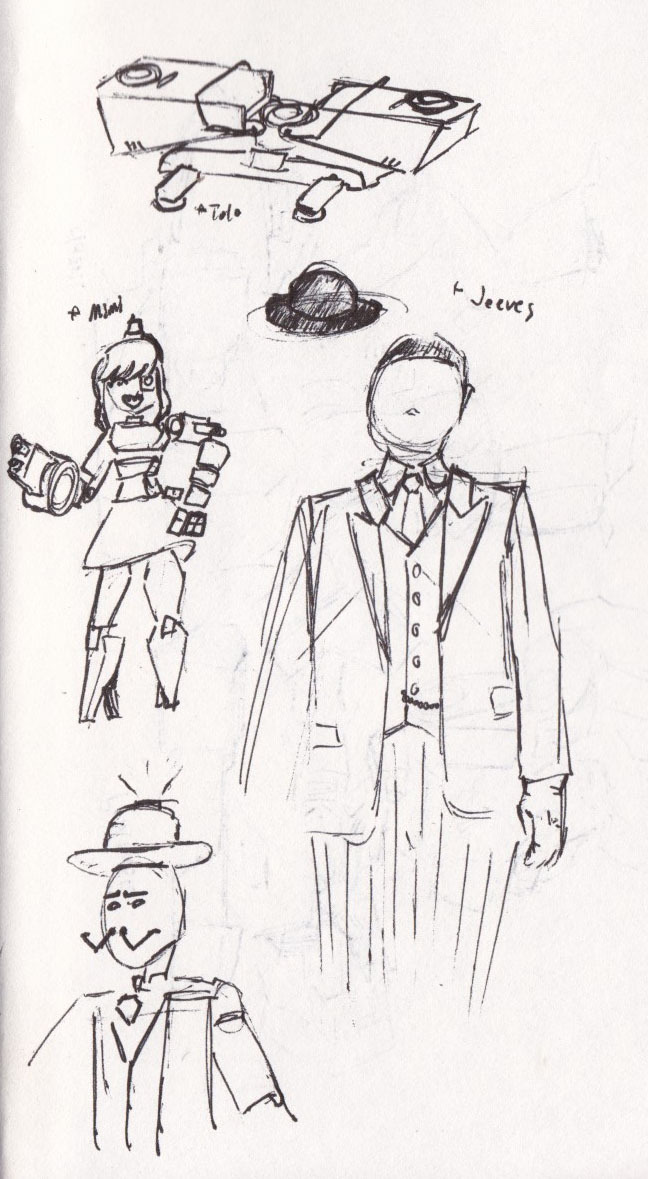
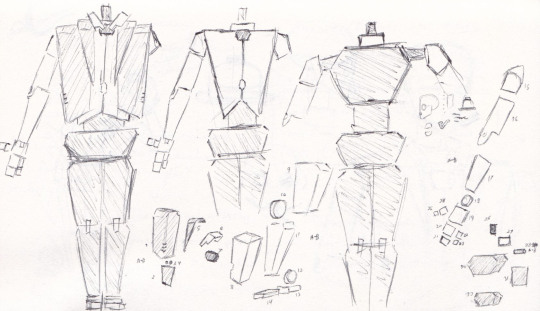

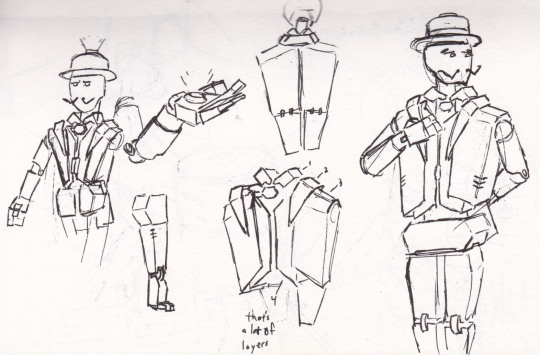
I see your Mimi-Sentry and Dispenelope and have a proposal: Teleporter butler.
...what? They already got to the teleporter? More than once? Curses.
#sketch#robot#butler#bowler#suit#components#wowthatisalotoflayers#teleporter#sentry#mimisentry#tf2#ohwell#hardtobetopicalwithmyturnaboutlag
3 notes
·
View notes
Photo

Melle Rouge
#melle rouge#black leather gloves#leather gloves#gloves#black leather pants#leather pants#bowler#black beauty#fashion
31 notes
·
View notes
Photo

And Englishmen like posing as gods.
- E.M. Forster
The bowler hat used to be staple of any gentleman’s attire once upon a time. It was an obvious class signifier. Now it seems stuffy and hopelesly outdated. If it is used today it be ex-cavalrymen of the various British regiments to march in honour of the Queen.
Strange as it sounds the bowler - a symbol of city life - has it origin in the countryside back in 1849. The bowler wasn’t originally designed for style but rather for practicality. Our story starts here with the second Earl of Leicester, Sir Thomas William Coke, who owned a 25,000-acre estate called Holkham Hall, which is still the seat of the Earl of Leicester today.
His gamekeepers would ride around the grounds of the estate on horseback wearing top hats. But, because top hats are tall and cylindrical, they could easily be knocked off by wind or tree branches.
Meanwhile, his younger brother, Edward Coke, started thinking about ways that he could design a hat that was smaller, more compact, and aerodynamic, as well as being sturdier, so the gamekeepers could still have their heads covered but wouldn’t have to worry about wind, tree branches, or encounters with poachers.
He took his idea to the hatter James Lock & Co. on 25th August 25th 1849, where the chief hat maker at the time, Thomas Bowler, created the first prototype with his brother William Bowler. And the hat was definitely a success and effective as the Holkham Hall gamekeepers still use it even to this day.
Part of this hat’s history is its many names. The hat was originally known as the “Coke hat” named after the Earl, William Coke. I was fortunate to see this as evidenced by a ledger from Lock & Co. belonging to Charlie Chaplin from 1912-1922 when I accompanied my older brothers who were being outfitted for a hat for Royal Ascot.
The gamekeepers who wore the hat at Holkham Hall gave it the moniker “Billy Coke” after William Coke, which later morphed into “Billycock.” However, these are seldom used names today. So, while I’m a stickler historical detail, I would never recommend anyone walking down the street and complimenting a gentleman on their Billycock!
Be that as it may, Thomas and William Bowler started making more of these hats for the public and decided to market them under their own name as “bowler hats,” which is why this is the most common name for them today.
Lock & Co, however, does still refer to this hat style as “the Coke.” Which in its own way can cause confusion. I remember one of my brothers on his first visit for a fitting and when asked if he wanted ‘the coke’ said, no thank you I’ll take a diet Pepsi if you have one. He’s not too bright that one.
Photo: Beatrix Foulerton with her father, Major Nicholas Foulerton of The Royal Scots Dragoon Guards, at the annual parade of the Combines Cavalry Old Comrades. Serving and former officers of the Cavalry and Yeomanry Regiments wear bowler hats and carry closed umbrellas. It takes place in Hyde Park, London, on Cavalry Sunday, the second Sunday in May.
#forster#em forster#quote#english#cavalry#regiment#bowler hats#bowler#lock & co#british army#parade#combines old cavalry#royal scots dragoons guards#hyde park#britain#william bowler
41 notes
·
View notes